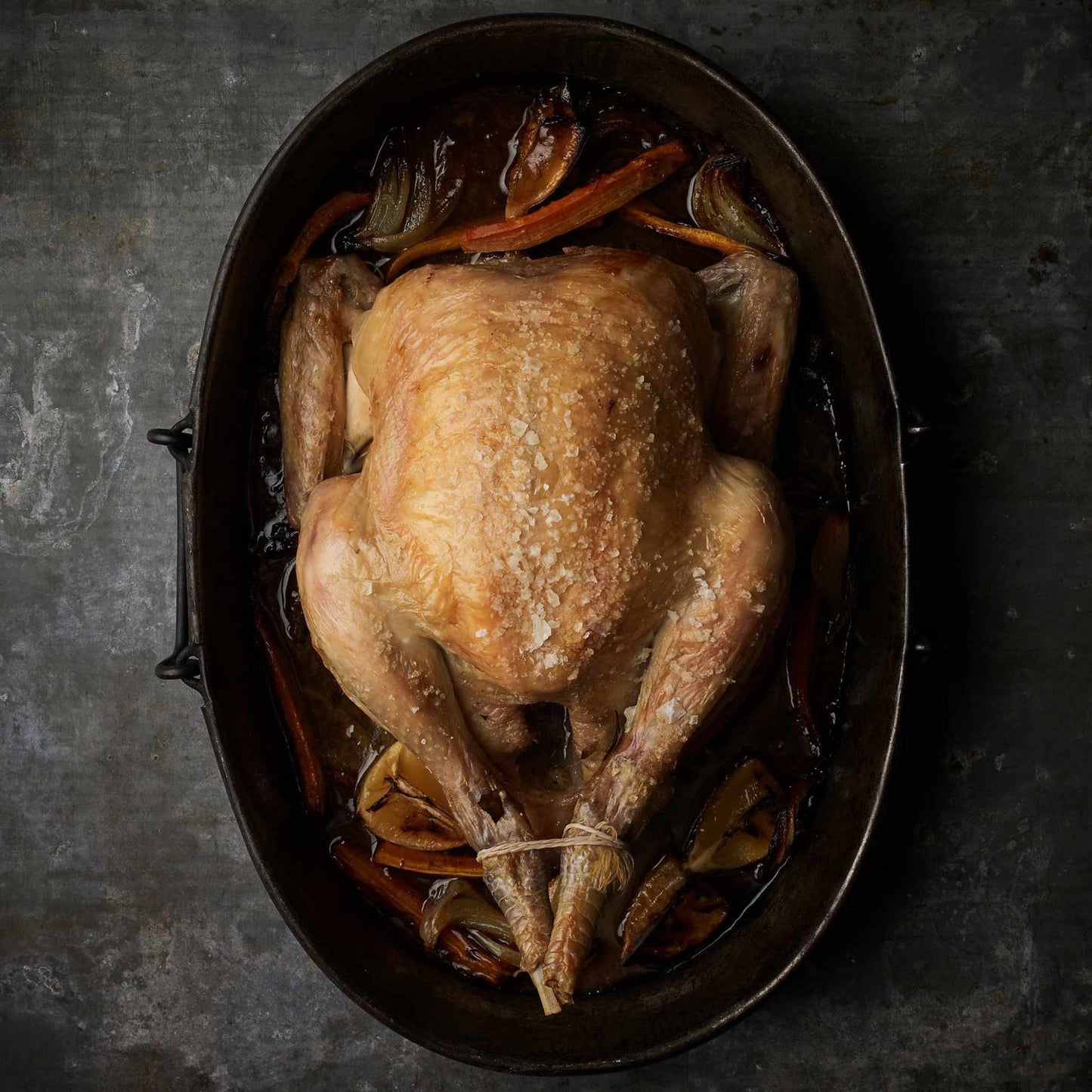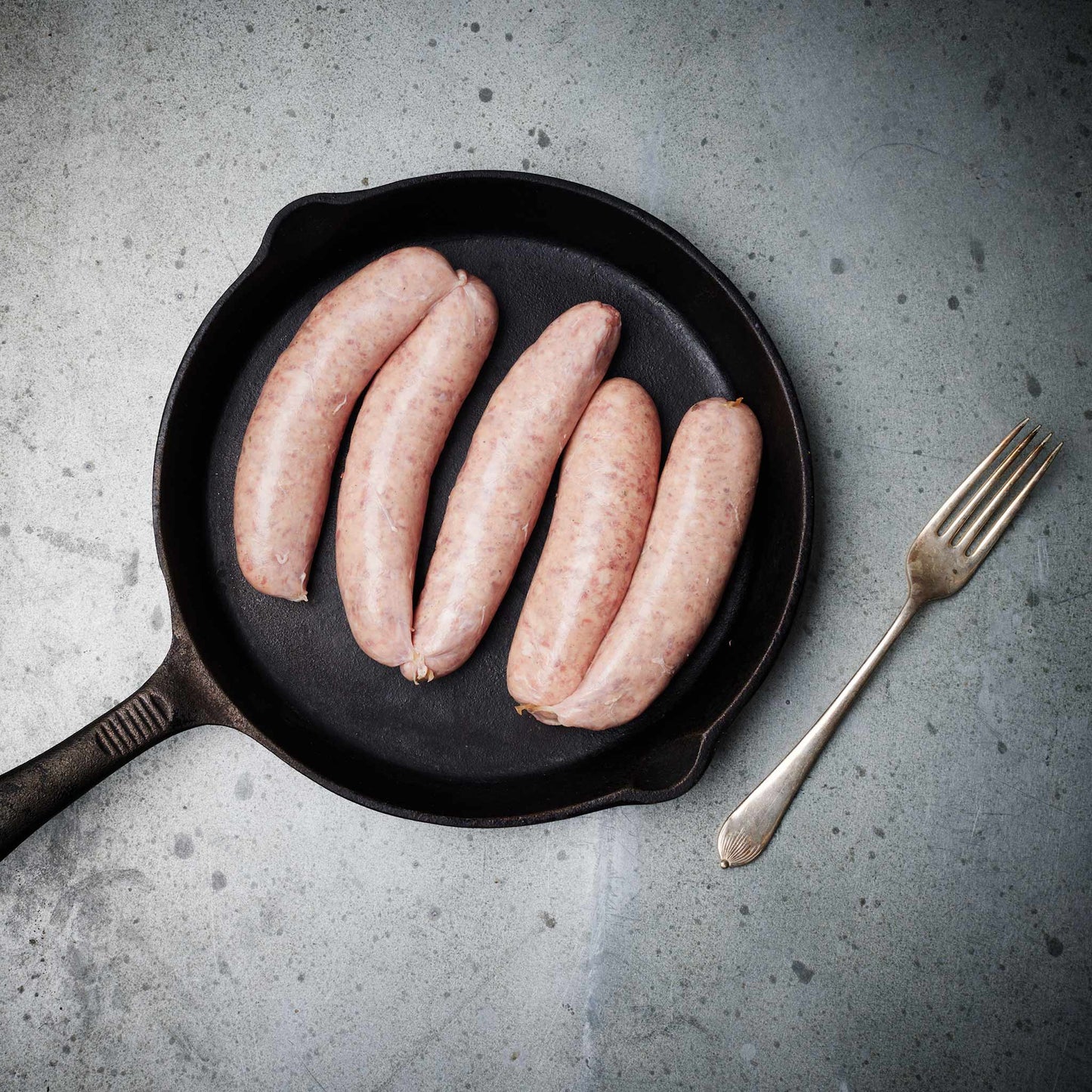We source our chicken from one farm in Leicestershire. The farm is Pasture for Life certified and rears truly free range, outdoor birds.

It's wild garlic season in the UK, and we're big fans of this pungent stuff. It's probably the easiest plant to safely identify and can be found in woodlands across the country from now until May.
This wonderful native herb has some excellent health benefits and combines very well with fattier meats such as pork or lamb.

Benefits
Extracts of wild garlic leaf have been shown to have strong anti-inflammatory properties, to lower blood pressure, decrease insulin sensitivity, lower cholesterol, inhibit platelet aggregation and increase membrane fluidity, all of which are beneficial in cardiovascular disease.
Extracts from leaves, stems and flowers have also been founds to inhibit the proliferation of human cancer cell lines including breast, lung, prostate, colon, lymphomas and neuroblasts. Suggesting there may be benefit in fighting cancer. Wild garlic Kaempferols also act as a chemopreventive agents, inhibiting the formation of cancer cells. In both these cases wild garlic was seen to have greater potency than traditional cultivated garlic.
Wild garlic has also been proved to be anti-bacterial and anti-fungal and is successfully used to treat yeast-related infections and normalise gut flora.
Many of the phytochemicals in wild garlic have be shown to be potent antioxidants.
How to use wild garlic
We had a recent cooking session at Ethical Butcher HQ with Michelin-starred chef Adam Gray, who cooked up this simple recipe with a pork rump steak.
How to ferment an excess of wild garlic
Since wild garlic has a relatively short season and wilts quite quickly after picking, it can be preserved and enhanced by a lacto ferment.
Lacto fermenting is controlled fermentation in a saline environment that allows only lactobacillus bacteria to grow, using the carbohydrates in the vegetables as food and producing lactic acid, which preserves the ferment. This works because the bad bacteria that would poison us can't live in the salty environment, and those that survive are very good for us, helping populate our gut with probiotics.
All you need for a lacto ferment is the vegetable or herb you're fermenting and some salt; nature takes care of the rest. The culture or bacteria starter is present on your hands, in the air and on the veg, so there's no need to use a starter or any kind of inoculation.
To make a wild garlic ferment, start by weighing your foraged garlic leaves.

Chop the leaves into 1-inch pieces with a sharp knife and put back into the bowl.
Add 2% fine table salt by weight; in this example 2% of 350g equates to 7g salt.

Mash the salt into the garlic leaves in the bowl by hand.

As you mix and squeeze the leaves to incorporate the salt, some moisture will be released – keep this in the bowl.
Transfer the mixture with the liquid into a sterilised jar. You can sterilise the jar with boiling water or in a low oven (at least 100ºC) for 20 minutes.

Press the leaf mixture into the jar, trying to remove any air bubbles as we're looking for an anaerobic fermentation (meaning it happens without oxygen).
If the tops of the leaves aren't completely submerged in the liquid, make up more brine at 2% by adding 10g salt to 500ml water and top up the mixture until everything is submerged.
Now for the most important stage. Cover the surface so no oxygen can get in and allow the unfriendly bacteria to grow. We've done this using a freezer bag partially filled with water to weigh down the mix in the jar and create an airtight seal on the top surface.

Allow the mixture to ferment for at least a week – when it's ready you should see bubbles rising to the surface of your ferment. At this point you can start sampling some of the wild garlic to see if it's right for you. It should taste slightly fizzy and still retain a good amount of crunch.
The longer you leave your wild garlic to ferment, the more sour it will become. You can leave it to ferment for up to three weeks. When you're happy with the taste of your ferment, either remove the weight and tighten the lid or, if you’ve made a larger batch, decant into smaller sterilised jars, close the lids tight and refrigerate.
How to tell if it's gone wrong
If you notice anything like a putrid smell, sliminess, a funky colour, or black or white mould, the ferment has spoiled and should not be eaten – it must be discarded and the jar sterilised. Don't be too disheartened if this happens; that's nature. Reasons for spoilage could be air getting in, not enough salt or too warm an environment for the fermentation.
How to use your fermented wild garlic
You might be wondering how to eat your fermented wild garlic. The flavour will be wonderfully sour, rich, herbal and garlicky all at the same time. There really is no single answer for how to use it: you could treat it like a condiment or pickle, use it to season cooked fatty meats such as steaks or even burgers, add to salad dressing, try with cheeses, smoked fish or grilled vegetables – however you like.



